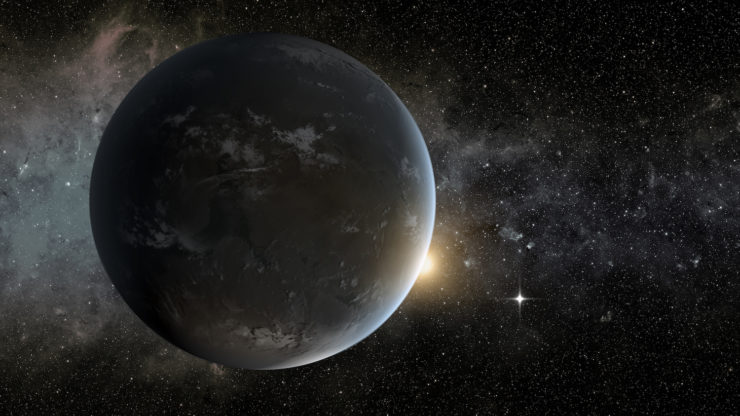Suppose for the moment that one was a science fiction author and was trying to imagine a plausible setting in which a multitude of inhabited worlds were within easy, quick reach. Further suppose that one did not care to discard relativity, but likewise was not keen on a setting where time dilation plays a significant role. What is one to do?
How many authors have tried to come up with settings that meet all these demands? More than you’d expect.
Old-time SF had the luxury of ignoring unpromising scientific data about the Solar System (which at that time was sparse, and to some degree conjectural). Authors like C. L. Moore and Leigh Brackett could freely imagine planets and moons that had Earthlike atmospheres and ecologies, not to mention exotic civilizations. Space probe info on the real conditions in the Solar System have made such speculations implausible. But… an author could set their story sufficiently far into the future that all the terraformable planets have been terraformed.
Examples are not readily coming to mind (I am sure I will smack my forehead when the comments start pouring in). Many authors have written about terraformed planets, but usually of just one planet, not all of them. Liz Williams’ Banner of Souls features a terraformed Mars, for example, while Pamela Sargent’s Venus series focuses on a generational quest to reshape Venus. Paul Preuss’ The Shining Ones provides an interesting edge case in which aliens reshape multiple worlds (Venus and Mars) to their liking. However, their program is far enough in the past that the terraforming has failed. Neither world is habitable when humans arrive in the modern era.
Another approach is to accept the worlds as they are and focus on smaller-scale efforts to exploit them. This at least would provide communities to visit—potentially a large number of them. Authors have located such communities on many bodies of the Solar System. See, for example, Clarke’s rather odd, hard SF yaoi novel Imperial Earth, in which various moons and planets are now home to self-contained, sealed cities.
Alternatively, authors might turn to a concept that was particularly popular in the 1970s and 1980s: turning the dead matter of moons and asteroids into orbiting space habitats, of which physicist Gerard K. O’Neill was an avid and convincing proponent. Or they could combine the strategies, as seen in Paul J. McAuley’s Quiet War series, which begins with the great powers of Earth eyeing the diverse communities of the outer Solar System. It would be nice to say that the old nations of Earth were inspired to embrace Infinite Diversity in Infinite Combinations…it would also be a lie. Instead, a rather grim tale of relentless cultural purification ensues.
An approach which offers the benefit of even smaller-scale efforts is to forget world or city-sized endeavors and focus on the human factor. If humans cannot survive on other worlds, alter the humans so that they can. The most striking example is probably John Varley’s original Eight Worlds setting, in which null-suits—form-fitting force fields combined with personal life-support equipment—enable otherwise naked humans to stroll about on the surfaces of extremely hostile worlds (such as Venus or Mercury). Null-suits do diddly-squat to protect wearers from the effects of gravity, however, so characters must avoid falling into the Sun or close encounters with black holes.
One of the odder solutions involves a huge spoiler so I will put the identity of the book series down in a footnote, where readers may choose to ignore it. In a future dominated by Islamic powers (a future that seems to have been based on a Classics Illustrated adaptation of the tales from the Arabian Nights or perhaps a screening of 1921’s The Sheik; a future that is utterly unrepresentative and false), one particularly visionary autocrat becomes frustrated at the inherent communications lag between star systems imposed by relativity. The solution? A massive engineering project to move the sunlike stars near the Sun into a much smaller volume. Points for ambition, although I do wonder how stable planetary orbits would be if all those stars were crammed together.
Finally, one can simply provide the illusion of rapid interstellar travel. Karl Schroeder’s Lockstep is one such book. In this setting, unable to avoid time-consuming voyages between distant worlds, the worlds agree to spend most of their time in suspended animation, waking according to a pre-arranged synchronized schedule. Years may pass in reality—but not to the citizens of the lockstepped worlds.
These are, of course, only a few of the possibilities. No doubt many of you can think of options I overlooked. Comments are, as ever, below.
In the words of fanfiction author Musty181, prolific book reviewer and perennial Darwin Award nominee James Davis Nicoll “looks like a default mii with glasses.” His work has appeared in Publishers Weekly and Romantic Times as well as on his own websites, James Nicoll Reviews (where he is assisted by editor Karen Lofstrom and web person Adrienne L. Travis) and the 2021 and 2022 Aurora Award finalist Young People Read Old SFF (where he is assisted by web person Adrienne L. Travis). He is a four-time finalist for the Best Fan Writer Hugo Award, and is surprisingly flammable.










